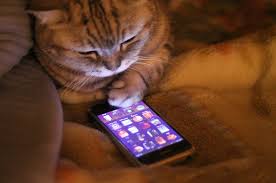
Ding. Look at me.
Digital addiction has gripped society in less than a decade.
The smartphone era dates from Apple’s introduction of the iPhone in 2007… before that, the closest thing to a digital pavlovian response was hearing AOL’s goofy “You’ve got Mail”. Either way, it is a nanosecond in human evolution. No matter what we think we know now, we simply don’t know what the long-term effects of digital devices/smartphones are or will be, any more than generations past could glean the effects of all of those earlier technologies on moods, relationships, and cognitive development.
Americans check their devices 80 times per day, which is more often than men think about sex (34.2 times according to Psych Today… I promise).
Why? The secret is in the glowing notifications, likes and shares. Psychologists at Facebook, Twitter, and Apple have all designed apps to constantly compete for your attention, stroke your ego (or crush it), or even both. It keeps you wondering, and it keeps you coming back. And it’s exhausting.
So, I went polling the CEO’s of major tech companies and their phones.. and guess what… almost blank and devoid of notifications. Here’s the takeaway: think of the phone not as a monolith but as a collection of tools to dip into individually when really needed. If have a real use for the phone — coordinating dinner plans via text — I do that and nothing else. And for email, I put myself on a schedule: After work, I can check it hourly until dinner, and then I’m done for the day. I backslide on this fairly frequently, but when I stick to it, I feel fantastic.
Information is not like drugs or alcohol; its effects are neither simple nor straightforward. As a society, we still don’t strike the right balance between risk and reward for those substances. It will be a long time before we fully grapple with the pros and cons of smartphone technology.
My iPhone is no longer the boss of me. My daughter is.










